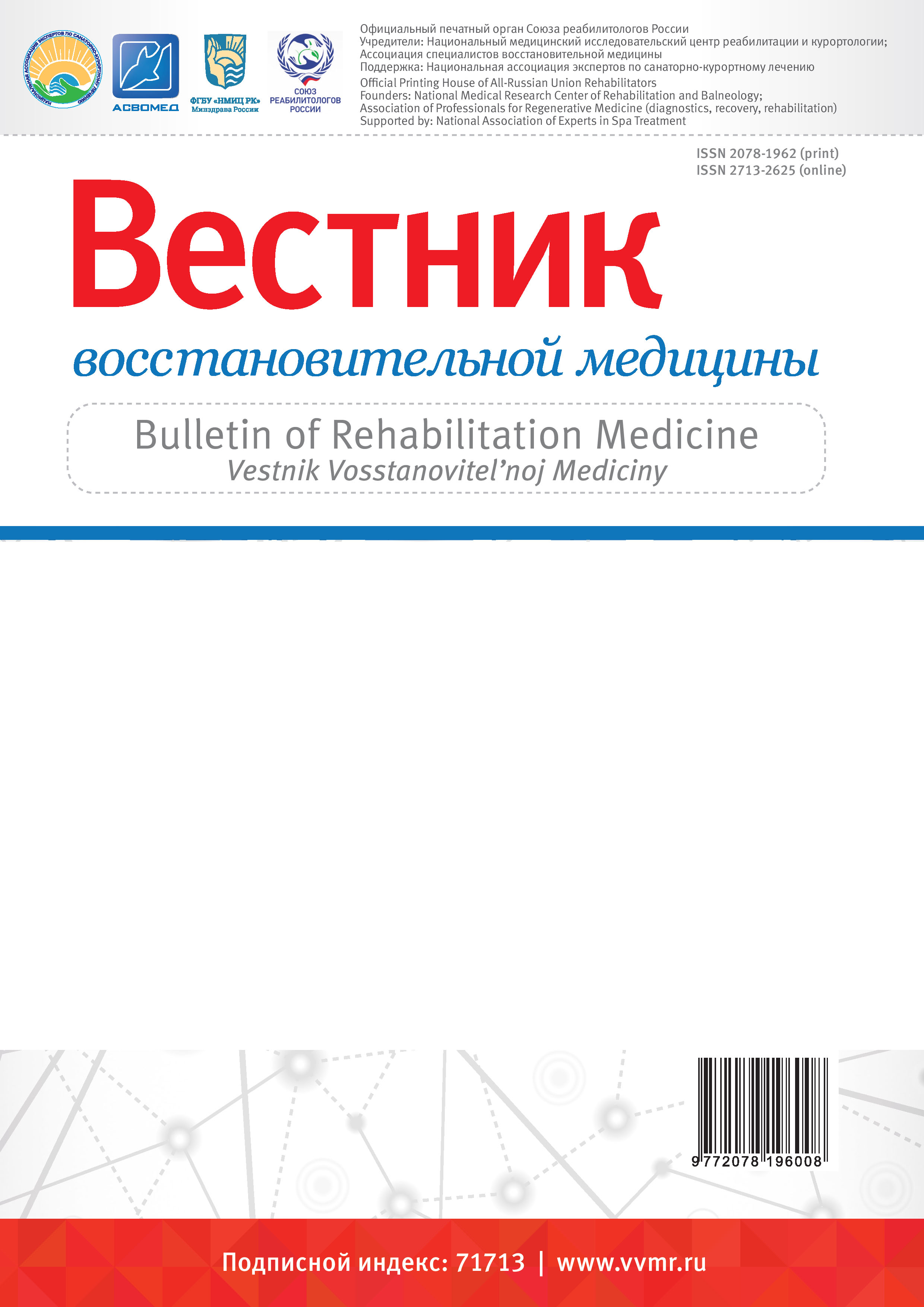Low adherence of patients with arterial hypertension to regular therapy increases the risk of fatal complications. Patients’ motivation for treatment can be increased by non-drug methods of exposure. Aim. To evaluate the effectiveness of the inclusion of dynamic electric neurostimulation in the treatment regimens of patients with arterial hypertension to control blood pressure (BP) levels. Material and methods. 60 patients aged 25-55 years old with verified diagnosis of arterial hypertension (I-II degree) were examined in Novosibirsk City Clinical Hospital № 2. The 1st group (the main group, n=30) received a 15-day course of acupuncture of the nei guan point from the apparatus «Leomax-Cardio Compact» in addition to the standard therapy; the 2nd group (comparison group, n=30) received the standard treatment complex and simulation of acupuncture exposure. Patients were trained to use the «Leomax- Cardio compact» device and to perform self-monitoring of arterial pressure (BP) from the UA-767 (AND) device. The checkup included carbohydrate, lipid metabolism, kidney function, electrocardiography assessment, daily BP monitoring. Results and discussion. By the end of observation, the target BP levels in the 1st group patients were 70.0% achieved, we managed to correct the variability of systolic and diastolic BP relative to the initial values by 1.3 and 1.6 times respectively, to decrease the rate of morning rise of systolic BP by 1.3 times, to increase the frequency of the variant of daily BP profile “dippers” by 1.3 times and to decrease the number of “non-dippers” by 1.7 times, which differed from the similar indicators in the 2nd group. Electro-puncture with «Leomax- Cardio Compact» may have an antihypertensive effect due its effect on the suprasegmental parts of the autonomic nervous system. Conclusion. Inclusion of electropuncture from the device Leomax-Cardio Compact in the treatment regimens of patients with uncomplicated arterial hypertension allows to correct the neurovegetative regulation, which allows effective control of the target values of systemic hemodynamics.
arterial hypertension, dynamic electric neurostimulation, electropuncture, blood pressure, variability, sympathetic-adrenal system
1. Kobalava Zh.D., Konradi A.O., Nedogoda S.V. Memorandum ekspertov Rossiyskogo kardiologicheskogo obschestva po rekomendaciyam Evropeyskogo obschestva kardiologov/ Evropeyskogo obschestva po arterial'noy gipertenzii po lecheniyu arterial'noy gipertenzii 2018 g. Rossiyskiy kardiologicheskiy zhurnal. 2018; 23(12): 131-42. https://doi.org/10.15829/1560-4071-2018-12-131-142
2. Chazova I.E., Zhernakova Yu.V. Diagnostika i lechenie arterial'noy gipertonii. Sistemnye gipertenzii. Klinicheskie rekomendacii. 2019; 16(1): 6-31.
3. Silverdal J., Mourtzinis G., Stener-Victorin E., Mannheimer C., Manhem K. Antihypertensive effect of low-frequency transcutaneous electrical nerve stimulation (TENS) in comparison with drug treatment. Blood Pressure. 2012; 21(5): 306-310. https://doi.org/10.3109/08037051.2012.680737
4. Arai Y.C., Ito A., Ohshima K., Hibino S., Niwa S., Kawanishi J., Numanami H., Sakakima Y., Mizuno S., Tawada Y., Maruyama Y., Sato J., Nishihara M., Inoue S., Ushida T. Transcutaneous Electrical Nerve Stimulation on the PC-5 and PC-6 Points Alleviated Hypotensionafter Epidural Anaesthesia, Depending on the Stimulus Frequency. Evidence-Based Complementary and Alternative Medicine. 2012; (2012): 727121 p. https://doi.org/10.1155/2012/727121
5. Stein C., Dal Lago P., Ferreira J.B., Casali K.R., Plentz R.D. Transcutaneous electrical nerve stimulation at different frequencies on heart rate variability in healthy subjects. Autonomic Neuroscience. 2011; 165(2): 205-8. https://doi.org/10.1016/j.autneu.2011.07.003
6. Flachskampf F.A., Gallasch J., Gefeller O. Randomized Trial of Acupuncture to Lower Blood Pressure. Circulation. 2007; (115): 3121-3129. https://doi.org/10.1161/CIRCULATIONAHA.106.661140
7. Chu N., Li M.N., Juan S.H., Chiou W.Y. Effects of transcutaneous electrical nerve stimulation on motion sickness induced by rotary chair: a crossover study. The Journal of Alternative and Complementary Medicine. 2012; 18(5): 494-500. https://doi.org/10.1089/acm.2011.0366
8. do Amaral Sartori S., Stein C., Coronel C.C., Macagnan F.E., Plentz R.D.M. Effects of Transcutaneous Electrical Nerve Stimulation in Autonomic Nervous System of Hypertensive Patients: A Randomized Controlled Trial. Current Hypertension Reviews. 2018; 14(1): 66-71. https://doi.org/10.2174/1573402114666180416155528
9. Strelyaeva O.P., Shayahmetova E.Sh., Shuruhina G.A., Matveeva L.M., Valitova A.I. Issledovanie funkcional'nogo sostoyaniya serdechno-sosudistoy sistemy prepodavateley na fone primeneniya profilakticheskih meropriyatiy. Chelovek. Sport. Medicina. 2020; 20(s1): 13-19. https://doi.org/10.14529/hsm20s102
10. Kollias A., Ntineri A., Stergiou G.S. Association of night-time home blood pressure with night-time ambulatory blood pressure and target-organ damage: a systematic review and meta-analysis. Journal of Hypertension. 2017; 35(3): 442-452. https://doi.org/10.1097/HJH.0000000000001189
11. Tucker K.L., Sheppard J. P., Stevens R., Bosworth H.B, Bove A., Bray E.P., Earle K., George J., Godwin M., Green B.B., Hebert P., Hobbs R., Kantola I., Kerry S.M., Leiva A., Magid D.J., Mant J., Margolis K.L., McKinstry B, McLaughlin M.A., Omboni S., Ogedegbe O., Parati G., Qamar N., Tabaei B.P., Varis J., Verberk W.J., Wakefield B. J., McManus R.J. Self-monitoring of blood pressure in hypertension: a systematic review and individual patient data meta-analysis. PLOS Medicine. 2017; 14(9): e1002389 p. https://doi.org/10.1371/journal.pmed.1002389






